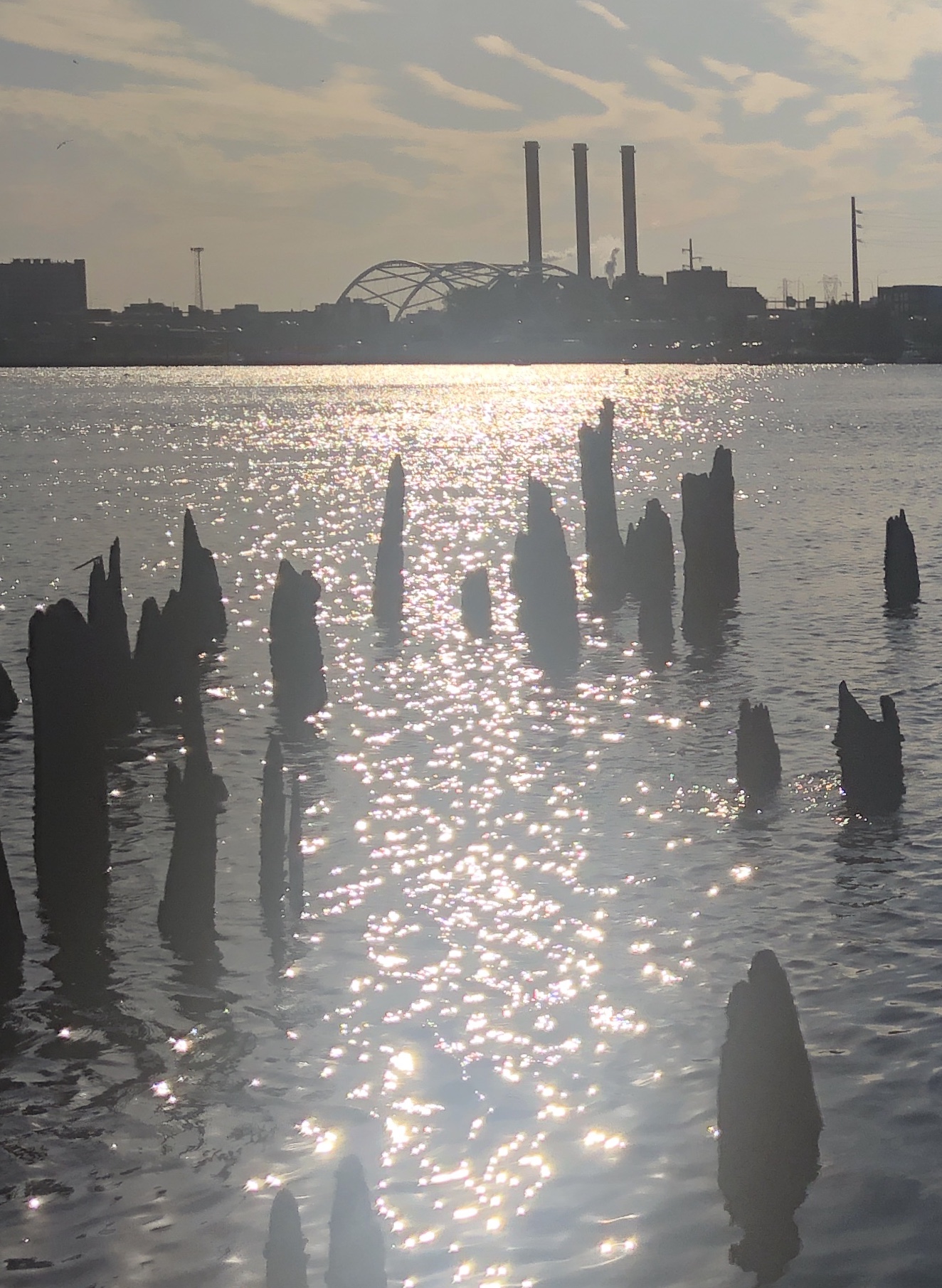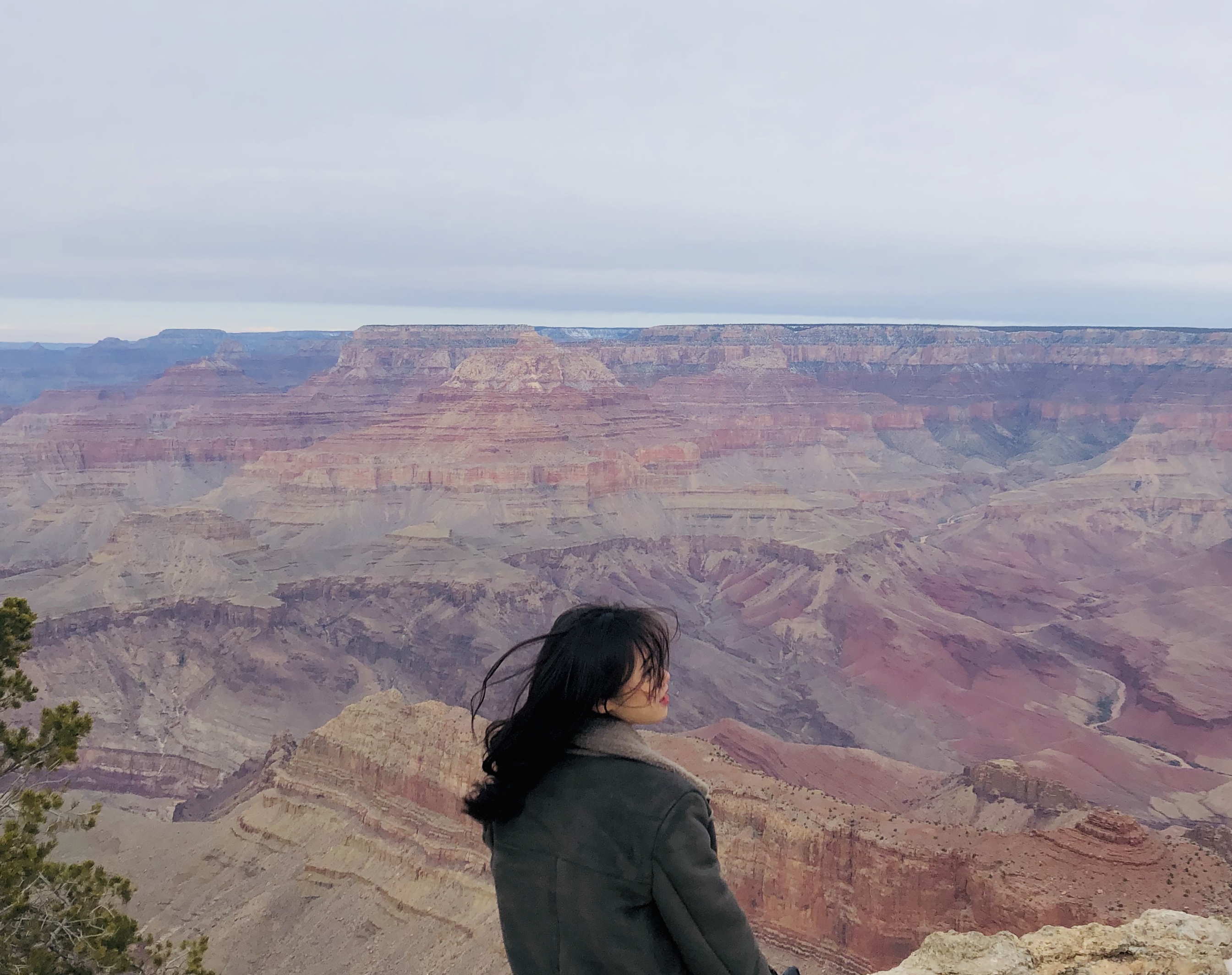
Ji Yoon Jen Chung is an
interdisciplinary artist working with research-based studio practice.
She uses drawing, photography, sculpture, and digital fabrication as modalities for converting an immaterial phenomenon into a material form. Her work focuses on the invisible and insignificant transitions which are often taken for granted, unnoticed, and forgotten. Oftentimes, the attempt to preserve the ephemerality and concede the inevitability of a transitory phenomenon collides and coexists in her work. Derived from transitions, her artistic practice is an act of condolence for the transient presence which takes time and indulges every process as an acceptance of loss.
In her perspective, memory is viewed as the residues formed between transitions. Memory is understood as an ephemeral transition constructed and reconstructed through one’s sensory perception. The attempt to preserve a transitory phenomenon through different modalities inevitably leads to an alteration of memory. Her experiential works are oftentimes an intuitive process that utilizes the transitions between different modalities as a metaphor of her narrative. Her practice is a personal memoir that ultimately characterizes specific correlations between various autobiographical retrieval cues and the level of memory modifications.
She uses drawing, photography, sculpture, and digital fabrication as modalities for converting an immaterial phenomenon into a material form. Her work focuses on the invisible and insignificant transitions which are often taken for granted, unnoticed, and forgotten. Oftentimes, the attempt to preserve the ephemerality and concede the inevitability of a transitory phenomenon collides and coexists in her work. Derived from transitions, her artistic practice is an act of condolence for the transient presence which takes time and indulges every process as an acceptance of loss.
In her perspective, memory is viewed as the residues formed between transitions. Memory is understood as an ephemeral transition constructed and reconstructed through one’s sensory perception. The attempt to preserve a transitory phenomenon through different modalities inevitably leads to an alteration of memory. Her experiential works are oftentimes an intuitive process that utilizes the transitions between different modalities as a metaphor of her narrative. Her practice is a personal memoir that ultimately characterizes specific correlations between various autobiographical retrieval cues and the level of memory modifications.
> to projects
Blood in the Louvre, Butt in Vimeo (B:L=B:V)
Rhode Island
School of Design
DM-1548-01
2020 Wintersession
DM-1548-01
2020 Wintersession
Have you ever watched a gore movie and rewound to the most
disturbing part over and over again? Do you follow Instagram accounts that are full
of disturbing 3D models? Have you ever googled weird medieval paintings and
shared them with friends? We, humans, make art that chills us to the bone and
we can’t take our eyes off of it. Thi studio course explores dark humor within
artistic context throughout history to understand its role and potential within
artistic practice.
In order to explore dark humor as an artistic methodology, we will start by questioning ‘dark’ imagination throughout history and the psychology behind it. The class will gain a deeper understanding of how dark humor has been used throughout history- from myths to memes; from the paintings of Hieronymus Bosch to the ‘Hi Stranger’ video. We will investigate how its usage varies between genres, traditions, time periods and cultures through class lectures, assigned readings, and guest speakers. The readings/viewing materials of broad range - from cognitive studies to contemporary web subculture; criminology studies to poems - will be provided for further discussion and exploration.
The majority of this course will focus on multiple hands-on workshops such as material workshops and discomfort workshops, for further exploration related to the theme of this course. Students will present work regularly in class for critique. The work can take any form - students are encouraged to fold the topics and themes discussed in the course into their own practice. By the end of the course, students will be able to grasp the complex and changing symbology of elements of dark humor in relation to human experience, and comprehend their own place in that context in order to sharpen their critical capacity and sense of inquiry.
In order to explore dark humor as an artistic methodology, we will start by questioning ‘dark’ imagination throughout history and the psychology behind it. The class will gain a deeper understanding of how dark humor has been used throughout history- from myths to memes; from the paintings of Hieronymus Bosch to the ‘Hi Stranger’ video. We will investigate how its usage varies between genres, traditions, time periods and cultures through class lectures, assigned readings, and guest speakers. The readings/viewing materials of broad range - from cognitive studies to contemporary web subculture; criminology studies to poems - will be provided for further discussion and exploration.
The majority of this course will focus on multiple hands-on workshops such as material workshops and discomfort workshops, for further exploration related to the theme of this course. Students will present work regularly in class for critique. The work can take any form - students are encouraged to fold the topics and themes discussed in the course into their own practice. By the end of the course, students will be able to grasp the complex and changing symbology of elements of dark humor in relation to human experience, and comprehend their own place in that context in order to sharpen their critical capacity and sense of inquiry.
Meeting Times:
Th/F 1:00 PM - 6:00 PM
W 1:00 PM - 6:00 PM (1/15/2020)
W 1:00 PM - 6:00 PM (1/29/2020)
Location:
BUILD SPACE, 4th Floor CIT
Instructors:
Ji Yoon Chung, jchung15@risd.edu
Hee-Joon June Yoon, hyoon03@risd.edu
Th/F 1:00 PM - 6:00 PM
W 1:00 PM - 6:00 PM (1/15/2020)
W 1:00 PM - 6:00 PM (1/29/2020)
Location:
BUILD SPACE, 4th Floor CIT
Instructors:
Ji Yoon Chung, jchung15@risd.edu
Hee-Joon June Yoon, hyoon03@risd.edu
Workshop 1.
Material Workshop:
To rethink semiosis of objects and materials
Material Workshop:
To rethink semiosis of objects and materials
Prompt:
Choose one of the concepts:
(disgust, love, purity, guilt, formless, cycle, home, mutability)
and describe it in your own language. Start with the general definition and interpret it on your own terms. Bring in any material according to the personal interpretation. Keep in mind that the material you will bring in should be utilized in a way rather than sitting as a final product/object. Bring in any additional tool if it’s needed for utilizing the material of your choice.
Choose one of the concepts:
(disgust, love, purity, guilt, formless, cycle, home, mutability)
and describe it in your own language. Start with the general definition and interpret it on your own terms. Bring in any material according to the personal interpretation. Keep in mind that the material you will bring in should be utilized in a way rather than sitting as a final product/object. Bring in any additional tool if it’s needed for utilizing the material of your choice.
Student:
Christine C.
Christine C.

“Personal Triggers of Disgust: dead bugs - juxtaposition between crunchy and wet/squishy, certain sour smells”
Janice G.

“My original idea was to make a grid system out of soap. However, the soap were too fragile. when i took them out of the mold, it either collapsed, or was attached to the silicone mold because of the heating and burning”
Amos K.

“Play doh smeared around objects covering the form. Materiality of play doh allows to stick and cover the object changing the formal qualities of the object”
Workshop 2.
Exploring Sensory:
To elevate non-visual sensory elements as a means of art-making and storytelling
Exploring Sensory:
To elevate non-visual sensory elements as a means of art-making and storytelling
Prompt:
Based on your interpretation of the concepts, bring in any form of sound such as sound recordings, script to read live, instruments to make/play sounds; smell such as an object that has a certain smell, certain smell in a container, etc; or a tactile material. The material you bring in can evoke the sensory experiences mentioned earlier (auditory, tactile, olfactory) or synesthesia, which is a condition in which one or more senses are perceived.
Based on your interpretation of the concepts, bring in any form of sound such as sound recordings, script to read live, instruments to make/play sounds; smell such as an object that has a certain smell, certain smell in a container, etc; or a tactile material. The material you bring in can evoke the sensory experiences mentioned earlier (auditory, tactile, olfactory) or synesthesia, which is a condition in which one or more senses are perceived.
Bonnie C.

“I wanted to covey ‘home’ with a sense of smell. I chose four different smells I associate with home: tea tree oil, Palo Santo, pre-worm compost food scraps, and diesel”
Yiqun Z.

“I took the flour to class and recorded the sound. The unique, slightly off-putting sound of mixing the dough. For the final project, I want to write a rap song about love so this is a good starting point”
Workshop 3.
Storytelling:
To explore storytelling methods and the ways to incorporate sensory experiences that each student explored from previous workshop
Storytelling:
To explore storytelling methods and the ways to incorporate sensory experiences that each student explored from previous workshop
Re-thinking the concept of comic, tragic within personal or collaborative narrative Persona / Character building as a narrator/speaker.
Designing a world for your narrative
1. Lynda Barry's Four Minute Diary Exercise
Daily repetition changes the way you pay attention to your life. It fosters a living relationship with the world. Looking back over your diary, you will see patterns and begin to notice what you notice.
2. Exquisite Corpse Storytelling
After writing a short story, give your story to the person next to you. Read the story you just received from the person next to you. Visualize the story. It could be the character, the landscape, or anything. After the visualization is over, give it to the person next to you. See the visualization you just received. Write a short story based on the visualization. (REPEAT)
1. Lynda Barry's Four Minute Diary Exercise
Daily repetition changes the way you pay attention to your life. It fosters a living relationship with the world. Looking back over your diary, you will see patterns and begin to notice what you notice.
2. Exquisite Corpse Storytelling
After writing a short story, give your story to the person next to you. Read the story you just received from the person next to you. Visualize the story. It could be the character, the landscape, or anything. After the visualization is over, give it to the person next to you. See the visualization you just received. Write a short story based on the visualization. (REPEAT)

Final Project
Prompt:
Students will choose one of the projects from the course and develop it into a final project. The final project should show one’s artistic research, experimentation and effort.
Students will choose one of the projects from the course and develop it into a final project. The final project should show one’s artistic research, experimentation and effort.
Yiqun Z.



Nicola D.

Amos K.

Vanessa L.

Janice G.

Christine C.

Vanishes as it Exists
“We may say, then, that the real world begins, paradoxically, to disappear at the very same time as it begins to exist.” - Jean Baudrillard
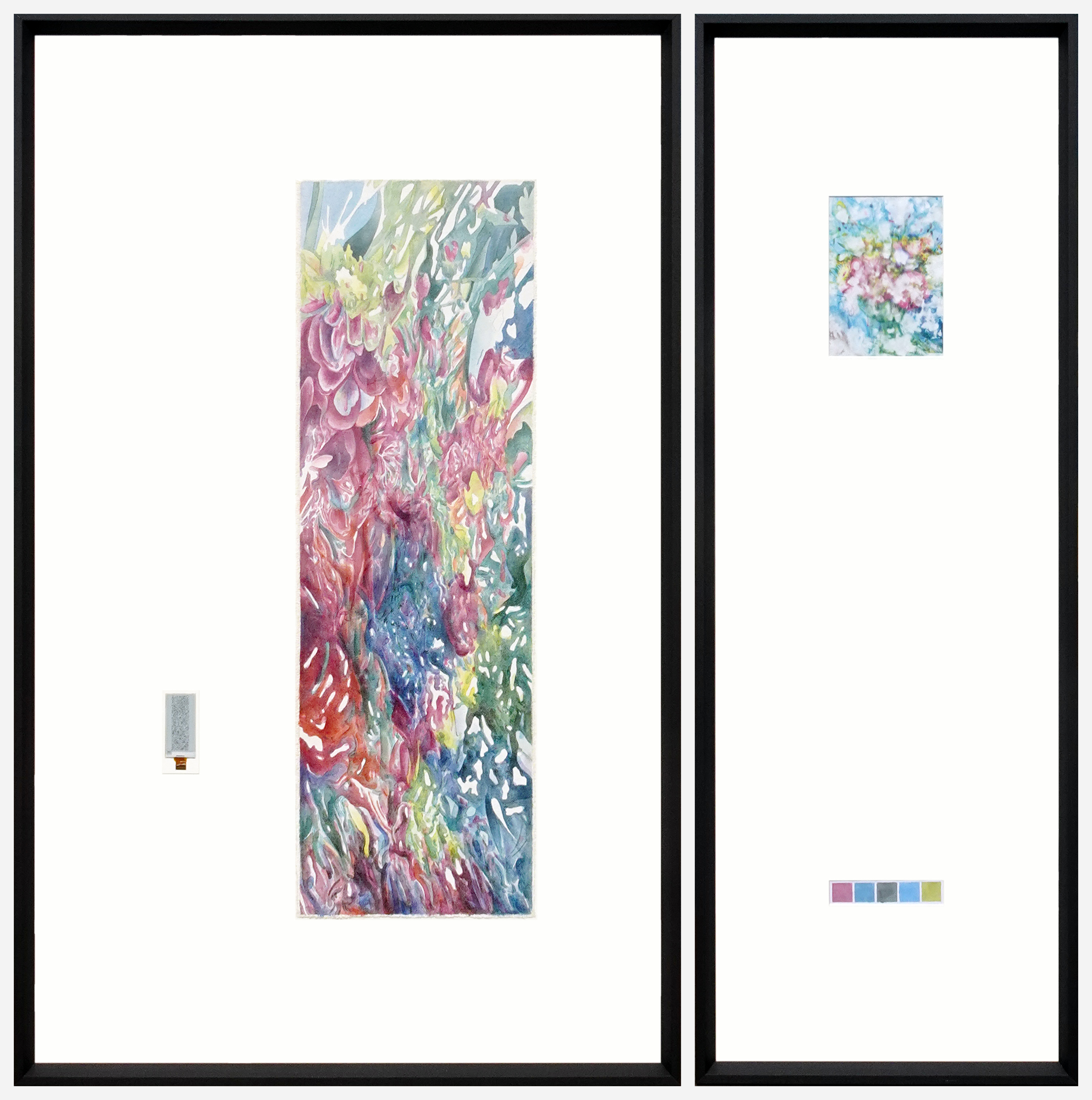
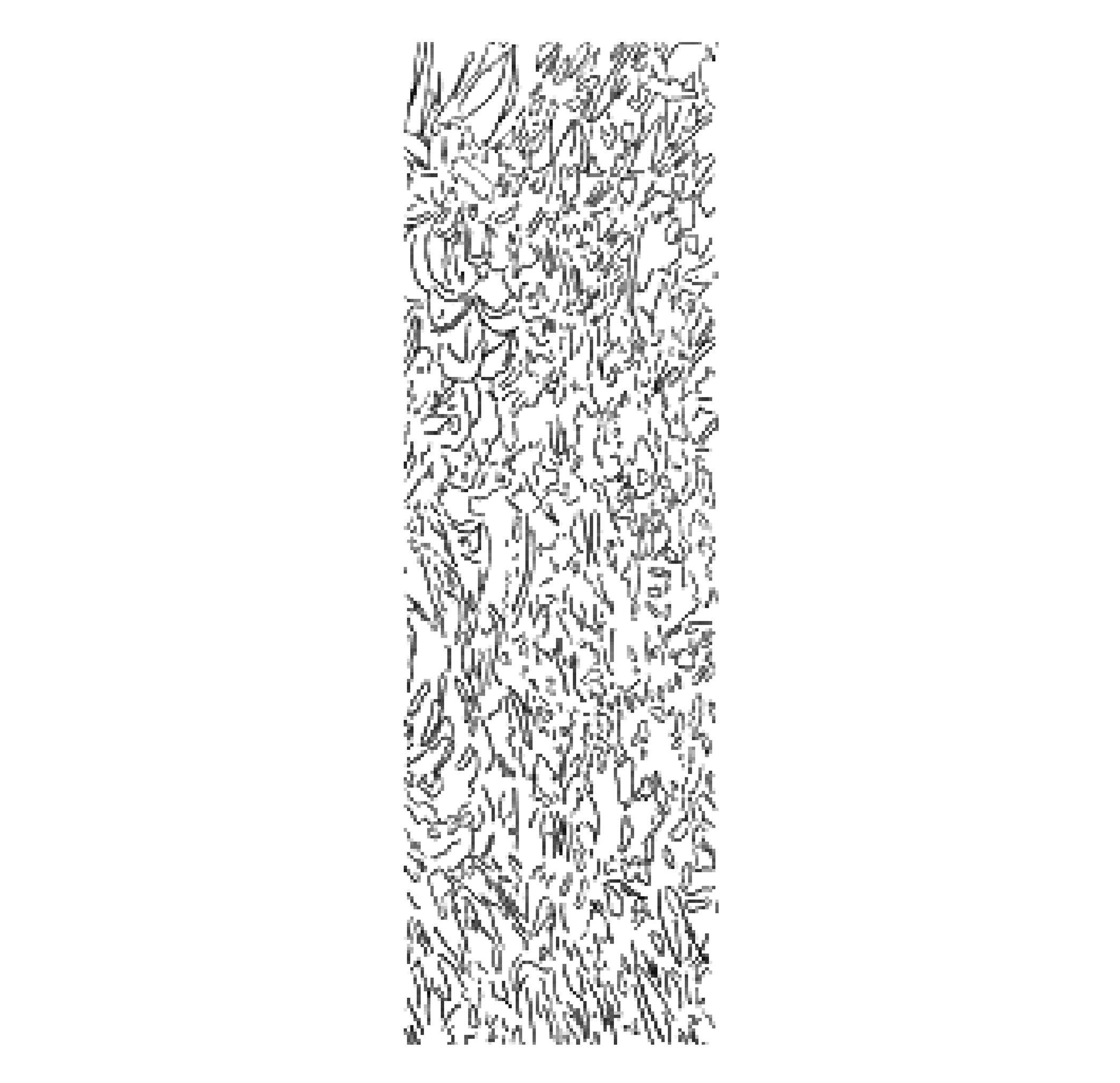
Liquified Photo Ink on Canvas and E-paper
80.3×130.3, 46.5×130.3(cm), 2022
Photo Credit: Jimin Yang
80.3×130.3, 46.5×130.3(cm), 2022
Photo Credit: Jimin Yang
Featured:
서울여자대학교 교수작품 전시회 | https://www.swu.ac.kr/ad/goboard7.jsp?bbsConfigFK=19&pkid=494130
Of Everything That Disappears Remains
비로소 사라져야 기억되는
July 31 - August 13
0 Gallery, Seoul Korea
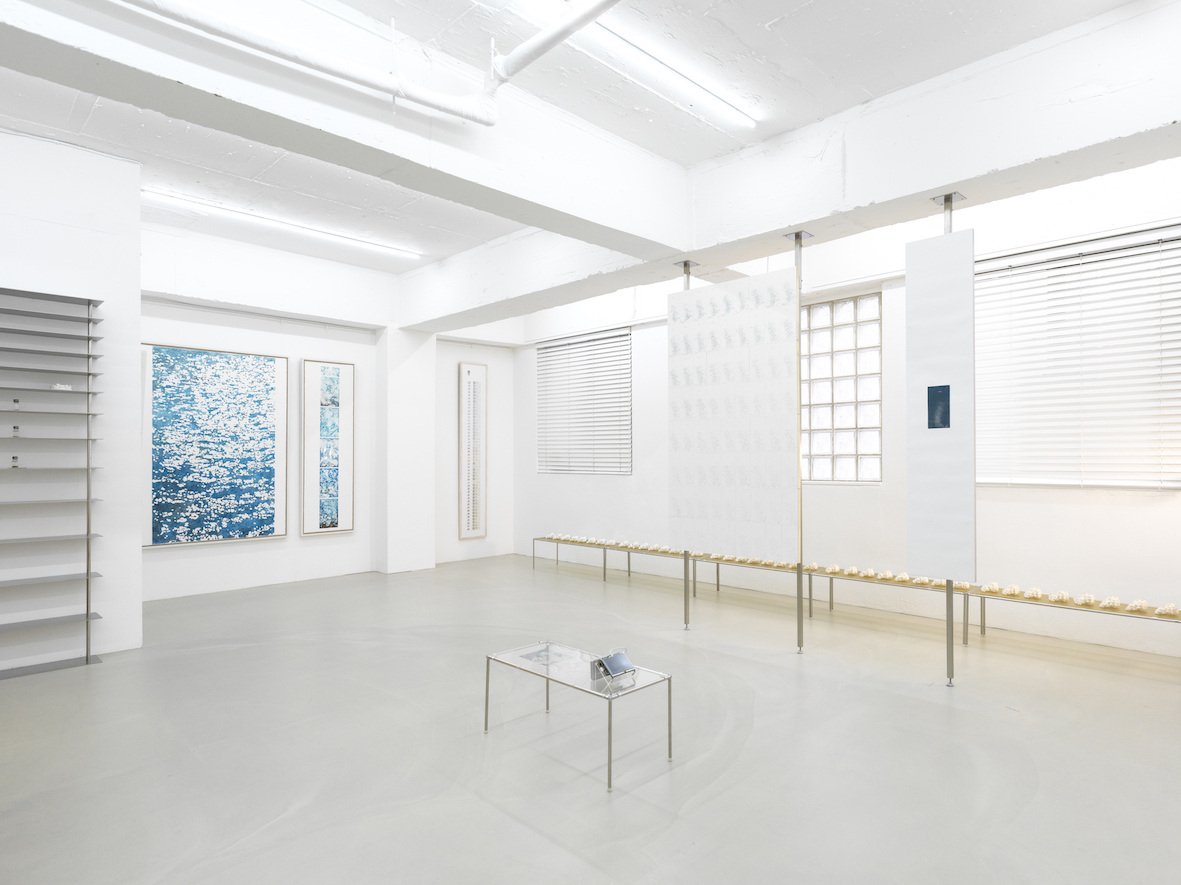
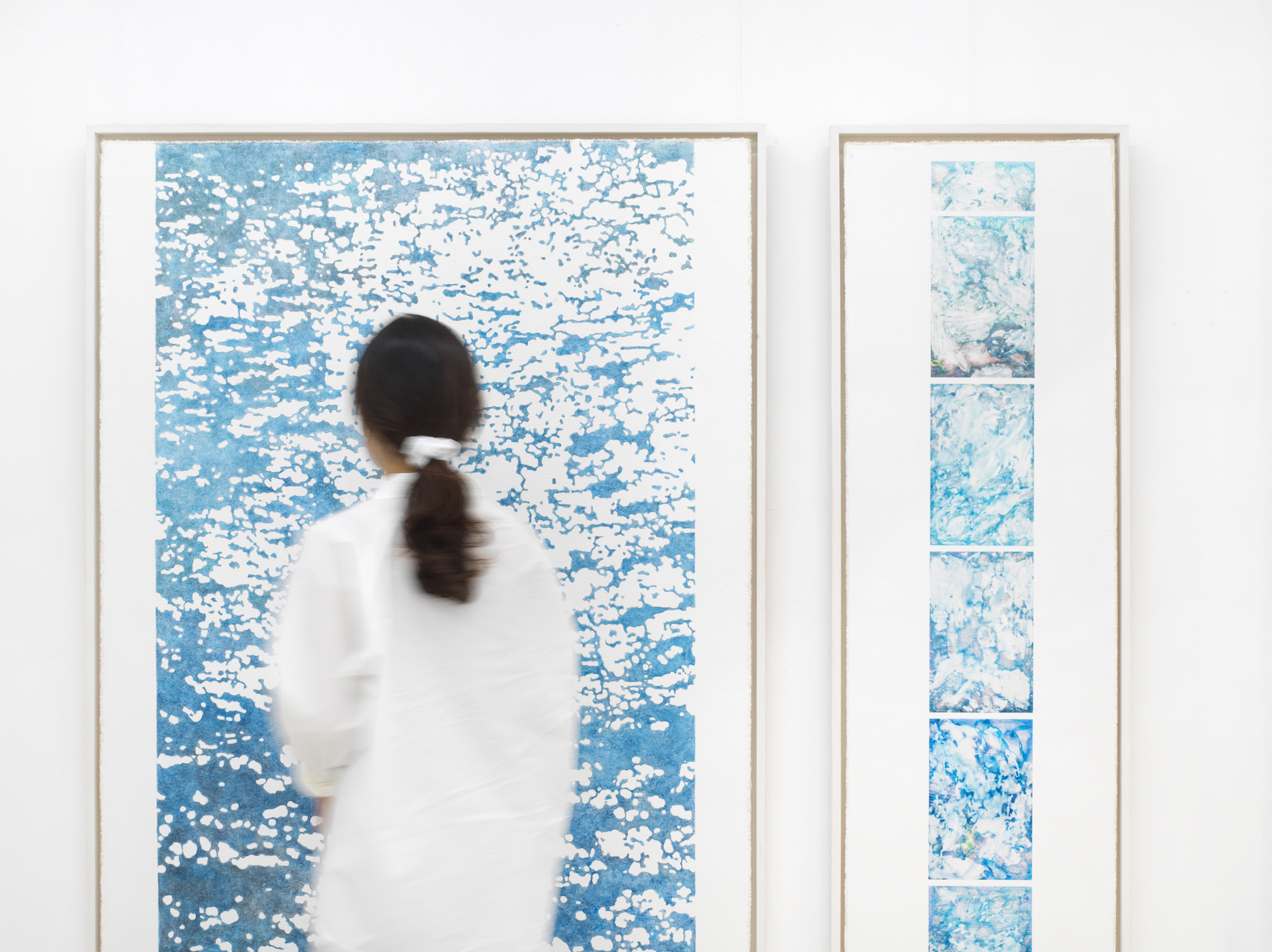
Preface | Kaweon Kim (0 Gallery Director)
Will a memory created today be remembered tomorrow? The sky we gazed at as we travelled to work; the signboards we passed while walking; the people we met on the subway; and the savory smell emanating from the bakery. Even if we remember all of these things, will they present themselves as memories that we want to remember tomorrow? We do not remember what we experience exactly as they take place on a daily basis. Precisely speaking, even if we do remember everything, we tend to forget as much as we remember. Even though humans are known to be the creatures of oblivion, we cannot consciously experience oblivion simply because forgotten memories can never be remembered. Nevertheless, if we come to notice that our memories are gradually fading away or disappearing, it paradoxically means that we have been reminiscing ‘that memory’. It is only when we reminisce on a constant basis, are we then able to feel the memory fading away. We encounter oblivion as much as we reminisce. In this exhibition memories are rather reproduced continuously as a data. However, the more we reproduce them, and the more we try to preserve them physically, the more our memories die out. Perhaps no memories already exist in the exhibition hall. What we witness are merely the things that memories gave birth to, or the creation achieved by memories.
In this exhibition, Ji Yoon Chung stands between the attitude to preserve memories and their tendency to disappear, while constantly organizing and arranging them. She accomplishes this calmly as if she is simply sorting through some books stacked on old bookshelves. However, the process by no means involves any indifference or negligence. This is because Ji Yoon Chung's attitude towards reproduction and repetition embodied in her work featuring the lumps that appear to be the same but are actually different, and again, a series of procedures that quantify them and arrange them into data, exude a sense of desperation for something abstract.
We experience today as much as flowing memories. And the importance lies in today, where all those memories begin. Ji Yoon Chung narrates stories that emanate from memories while never once omitting the present perspective that looks at changing things. We shall strive to remember that today can be the memory we reach for tomorrow as much as we reminisce for the past.
Will a memory created today be remembered tomorrow? The sky we gazed at as we travelled to work; the signboards we passed while walking; the people we met on the subway; and the savory smell emanating from the bakery. Even if we remember all of these things, will they present themselves as memories that we want to remember tomorrow? We do not remember what we experience exactly as they take place on a daily basis. Precisely speaking, even if we do remember everything, we tend to forget as much as we remember. Even though humans are known to be the creatures of oblivion, we cannot consciously experience oblivion simply because forgotten memories can never be remembered. Nevertheless, if we come to notice that our memories are gradually fading away or disappearing, it paradoxically means that we have been reminiscing ‘that memory’. It is only when we reminisce on a constant basis, are we then able to feel the memory fading away. We encounter oblivion as much as we reminisce. In this exhibition
In this exhibition, Ji Yoon Chung stands between the attitude to preserve memories and their tendency to disappear, while constantly organizing and arranging them. She accomplishes this calmly as if she is simply sorting through some books stacked on old bookshelves. However, the process by no means involves any indifference or negligence. This is because Ji Yoon Chung's attitude towards reproduction and repetition embodied in her work
We experience today as much as flowing memories. And the importance lies in today, where all those memories begin. Ji Yoon Chung narrates stories that emanate from memories while never once omitting the present perspective that looks at changing things. We shall strive to remember that today can be the memory we reach for tomorrow as much as we reminisce for the past.
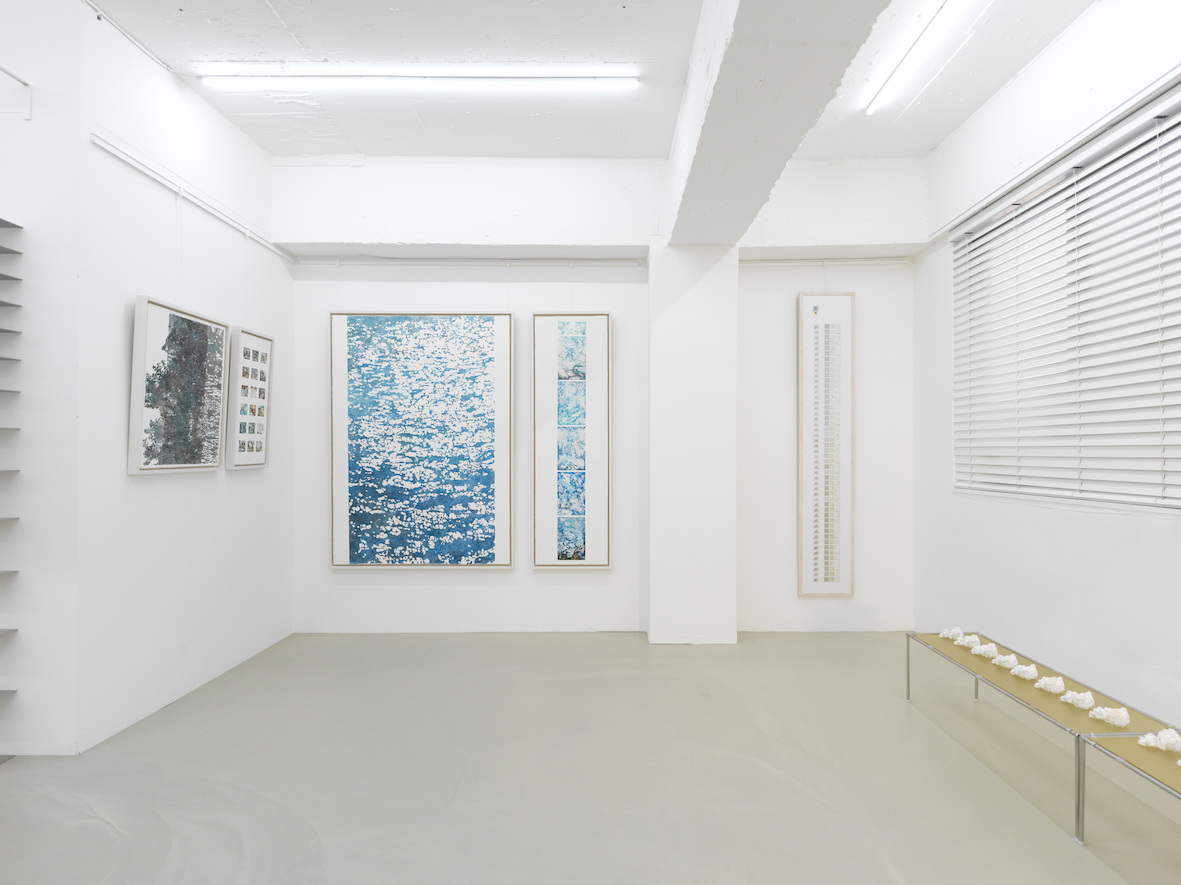
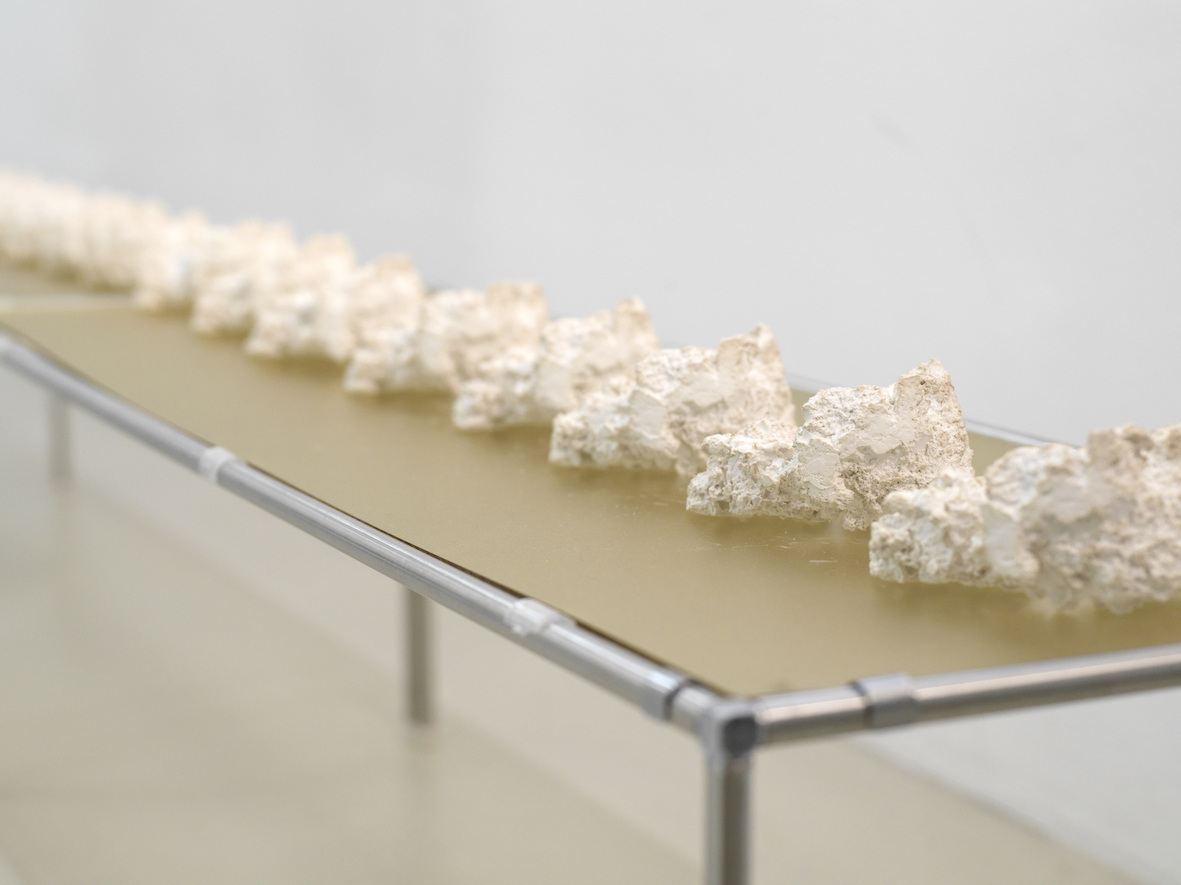
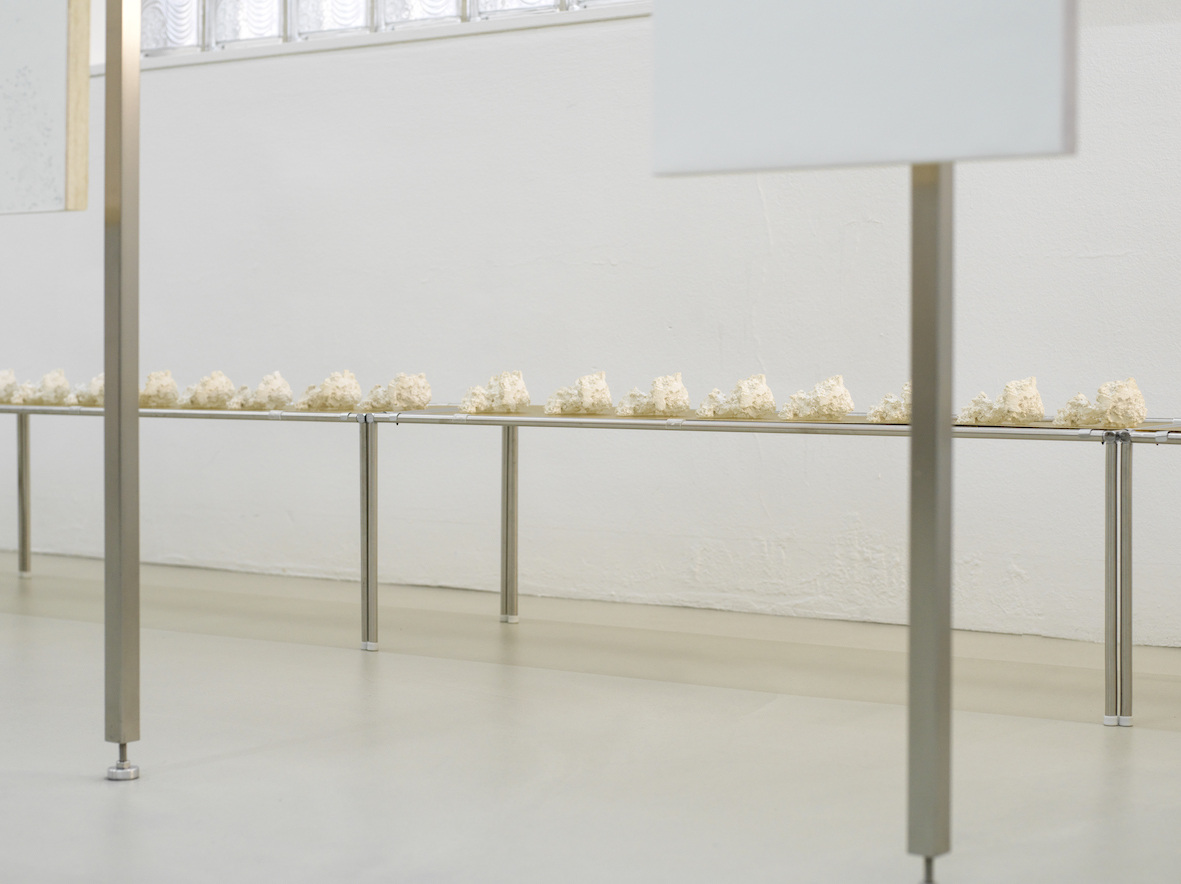
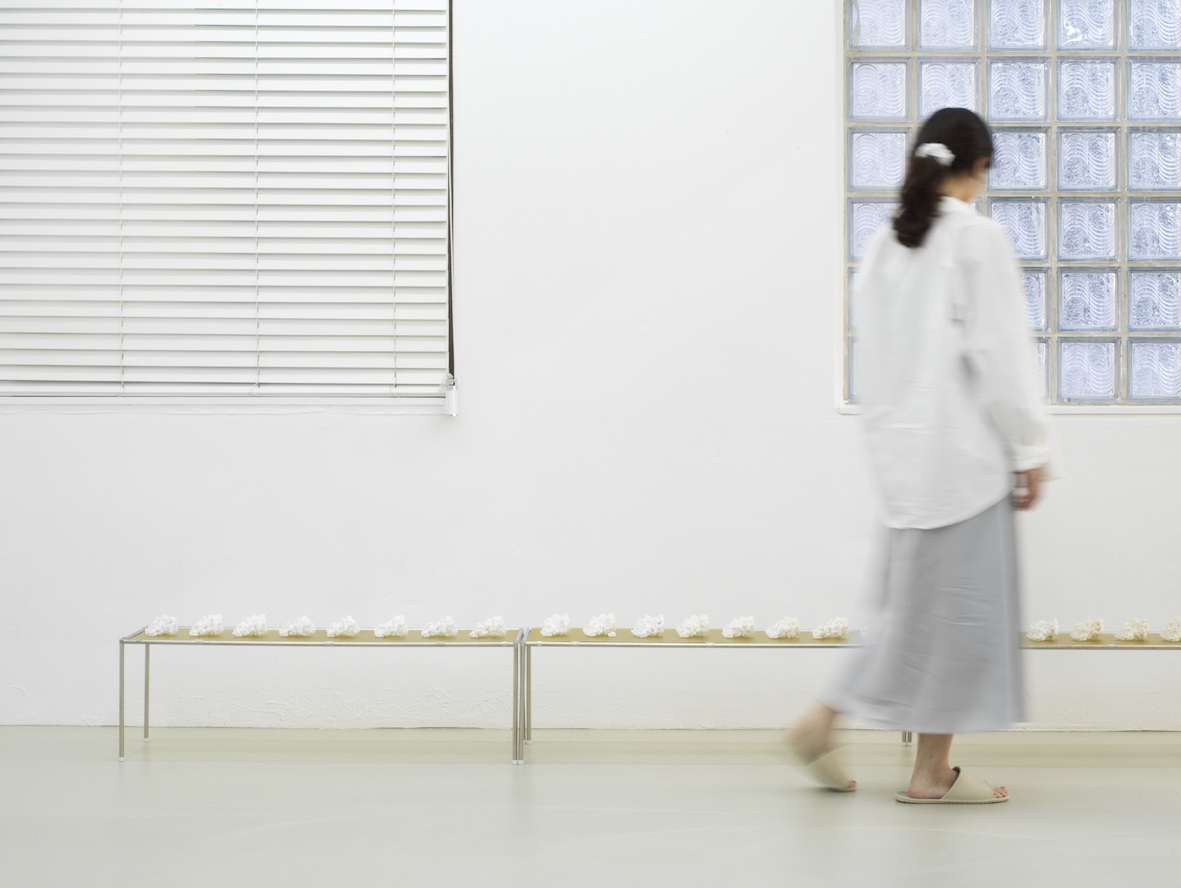
서문 | 김가원 (0갤러리 디렉터)
오늘의 기억이 내일의 추억이 될까? 출근길에 본 하늘, 지나가면서 본 간판, 지하철에서 마주친 사람들, 빵집에서 새어 나오는 고소한 냄새. 이 모든 것들을 다 기억한다고 해도 이것들이 과연 내일 다시 꺼내 보고 싶은 추억이 될까? 우리는 일상적으로 경험한 모든 것들을 그대로 기억하진 않는다. 정확히 표현하자면, 기억하더라도 그만큼 많은 것들을 흘려보낸다. 흔히 인간은 망각의 동물이라고 이야기하지만 사실 의식적으로 망각을 경험할 수는 없다. 잊혀진 기억은 이미 기억되지 않기 때문이다. 그럼에도 불구하고 어떤 기억이 점차 옅어지거나 사라지는 것을 경험한다면, 그것은 역설적으로 그만큼 ‘그 기억’을 추억하고 있다는 뜻이다. 끊임없이 추억할 때에야 비로소 사라지는 것을 느낄 수 있다. 망각은 추억할수록 경험된다.
이번 전시 <비로소 사라져야 기억되는 Of everything that disappear remains>에서 기억은 오히려 하나의 자료가 되어 끊임없이 복제된다. 그러나 복제하면 할수록, 물리적으로 보존하려 할수록 기억은 사라진다. 어쩌면 이미 전시장에 기억은 없다. 기억이 낳은 것들, 기억의 창조물만 있을 뿐이다. 이번 전시에서 정지윤은 기억에 대해 보존하고자 하는 태도와 사라지는 현상 그사이에 서서 끊임없이 그것들을 정리하고 배열한다. 마치 오래된 서가에서 책을 정리하듯 담담하다. 그러나 그 과정이 결코 무관심하거나 소홀한 것은 아니다. 작품
흘러가는 기억만큼 우리는 오늘을 경험한다. 중요한 것은 그 모든 기억의 시초가 되는 오늘에 있다. 정지윤은 기억에 관해 이야기하면서도 변해가는 것들을 바라보는 현재의 시선을 빼놓지 않는다. 지나간 시간을 추억하는 것만큼 오늘이 내일의 추억이 될 수 있다는 사실을 기억해야 하지 않을까.

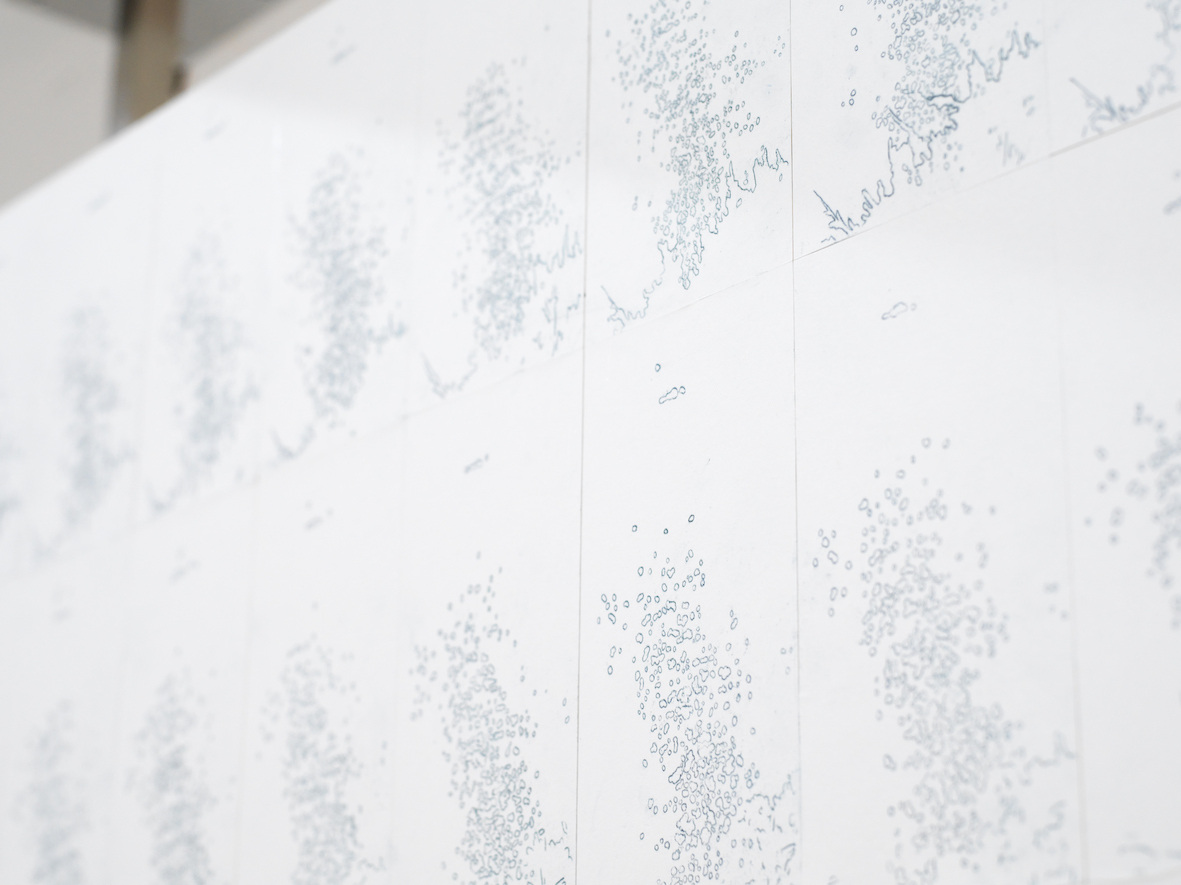
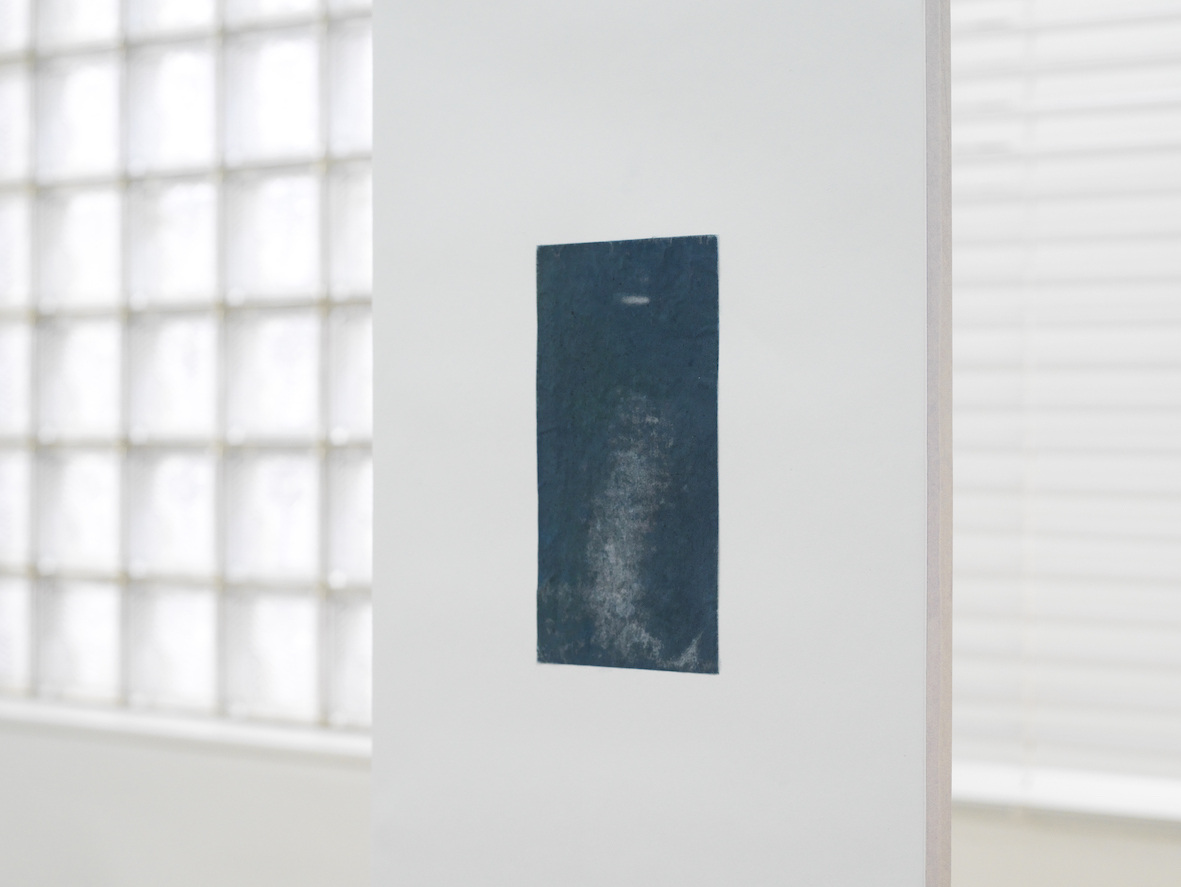
Featured:
0 Gallery | https://000gallery.com/Jiyoon-Chung
Neolook | https://neolook.com/archives/20210731d
Seoul Art Guide | https://www.daljin.com/?WS=21&BC=gdv&GNO=D075023
Art Map | https://art-map.co.kr/exhibition/view.php?idx=9530
Art Boda | https://artboda.co.kr/bbs/board.php?bo_table=exhibition&wr_id=363&sca=%EC%A2%85%EB%A3%8C%3E®ion=
I’ve Came to Realize
June 16 - June 20
M Gallery, CICA – Czong Institute for Contemporary Art, Kimpo Korea

Derived from transitions, my artistic practice is an act of condolence for the transient presence that takes time and indulges every process as an acceptance of loss.
Retrospection makes memories fade. The process of recall supplants experience with imagery, often tied to a photo or another cue, that displaces the initial experience. All memories are false to some degree, in the sense that they do not literally represent past experiences. Through retrospection, the initial experience is altered and simultaneously fades away. I understand memory to be an ephemeral transition constructed and reconstructed through one’s sensory perception.
What remains is to witness the vanished moments that evoke associated memories. To confront transition, I tend to grasp the fleeting present. Even a fragment of this disappeared moment evokes a memory that helps fill the emptiness and allows for a connection between the past and present self. I offer my condolences to these pieces that substitute the loss, which is a significant process of my art practice. The attempt to preserve a transitory phenomenon through archives by utilizing digital photography and various mediums inevitably leads to an alteration of memory. The intrinsic presence disappears when it is retained, duplicated, and remembered.
화폭에 담긴 시각적 표현은 ‘보이는 것’에 대한 작가의 관점과 해석이 담긴 재현이며 일시적인 현상을 잠시나마 보존한 기록이다. 작가의 작업, 즉 재현된 기록물은 시각과 그 외의 감각 기관으로 비롯된 주관적 번역으로 작가의 해석과 기억에 기인한다. 나는 끊임없이 전환에서 파생된 그리고 희생된 일시적인 존재에 대한 애도를 작업에 담는다.
대체로 많은 것들은 변하면서 의미가 퇴색하고 사라지며 그럼에도 무언가를 남긴다. 그것은 존재의 잔여물이 될 수도 있고 존재의 부재 자체가 연상시키는 감각적 현상일 수도 있다.
나의 관점에서 기억은 전환 사이에 형성된 잔재물로 간주된다. 전환이란, 물리적인 장소의 변화부터 시간의 흐름, 신체적 변화를 내포한다. 이러한 변화 가운데 사진이나 글로 그 순간을 기록하지만 매체를 통해 일시적 현상을 보존하려는 시도는 필연적으로 기억의 변형을 불러올 수밖에 없다. 인출 단서는 기억을 회상하도록 돕지만 동시에 기억을 새롭게 형성시키기 때문이다. 회상의 과정은 인출 단서에 담긴 본래의 시각적 경험을 새로운 기억으로 대체한다. 초기의 상태는 그 존재를 보존하고, 복제하고, 기억될 때 사라진다. 즉, 기억은 영원하지 않는 일시적인 존재임을 의미한다.
나의 작업은 잠시 머무는 것들에 대한 충분한 애도와 현상을 보존하고 일시적 현상의 필연성을 인정하려는 시도가 충돌하고 공존한다.
Retrospection makes memories fade. The process of recall supplants experience with imagery, often tied to a photo or another cue, that displaces the initial experience. All memories are false to some degree, in the sense that they do not literally represent past experiences. Through retrospection, the initial experience is altered and simultaneously fades away. I understand memory to be an ephemeral transition constructed and reconstructed through one’s sensory perception.
What remains is to witness the vanished moments that evoke associated memories. To confront transition, I tend to grasp the fleeting present. Even a fragment of this disappeared moment evokes a memory that helps fill the emptiness and allows for a connection between the past and present self. I offer my condolences to these pieces that substitute the loss, which is a significant process of my art practice. The attempt to preserve a transitory phenomenon through archives by utilizing digital photography and various mediums inevitably leads to an alteration of memory. The intrinsic presence disappears when it is retained, duplicated, and remembered.
화폭에 담긴 시각적 표현은 ‘보이는 것’에 대한 작가의 관점과 해석이 담긴 재현이며 일시적인 현상을 잠시나마 보존한 기록이다. 작가의 작업, 즉 재현된 기록물은 시각과 그 외의 감각 기관으로 비롯된 주관적 번역으로 작가의 해석과 기억에 기인한다. 나는 끊임없이 전환에서 파생된 그리고 희생된 일시적인 존재에 대한 애도를 작업에 담는다.
대체로 많은 것들은 변하면서 의미가 퇴색하고 사라지며 그럼에도 무언가를 남긴다. 그것은 존재의 잔여물이 될 수도 있고 존재의 부재 자체가 연상시키는 감각적 현상일 수도 있다.
나의 관점에서 기억은 전환 사이에 형성된 잔재물로 간주된다. 전환이란, 물리적인 장소의 변화부터 시간의 흐름, 신체적 변화를 내포한다. 이러한 변화 가운데 사진이나 글로 그 순간을 기록하지만 매체를 통해 일시적 현상을 보존하려는 시도는 필연적으로 기억의 변형을 불러올 수밖에 없다. 인출 단서는 기억을 회상하도록 돕지만 동시에 기억을 새롭게 형성시키기 때문이다. 회상의 과정은 인출 단서에 담긴 본래의 시각적 경험을 새로운 기억으로 대체한다. 초기의 상태는 그 존재를 보존하고, 복제하고, 기억될 때 사라진다. 즉, 기억은 영원하지 않는 일시적인 존재임을 의미한다.
나의 작업은 잠시 머무는 것들에 대한 충분한 애도와 현상을 보존하고 일시적 현상의 필연성을 인정하려는 시도가 충돌하고 공존한다.


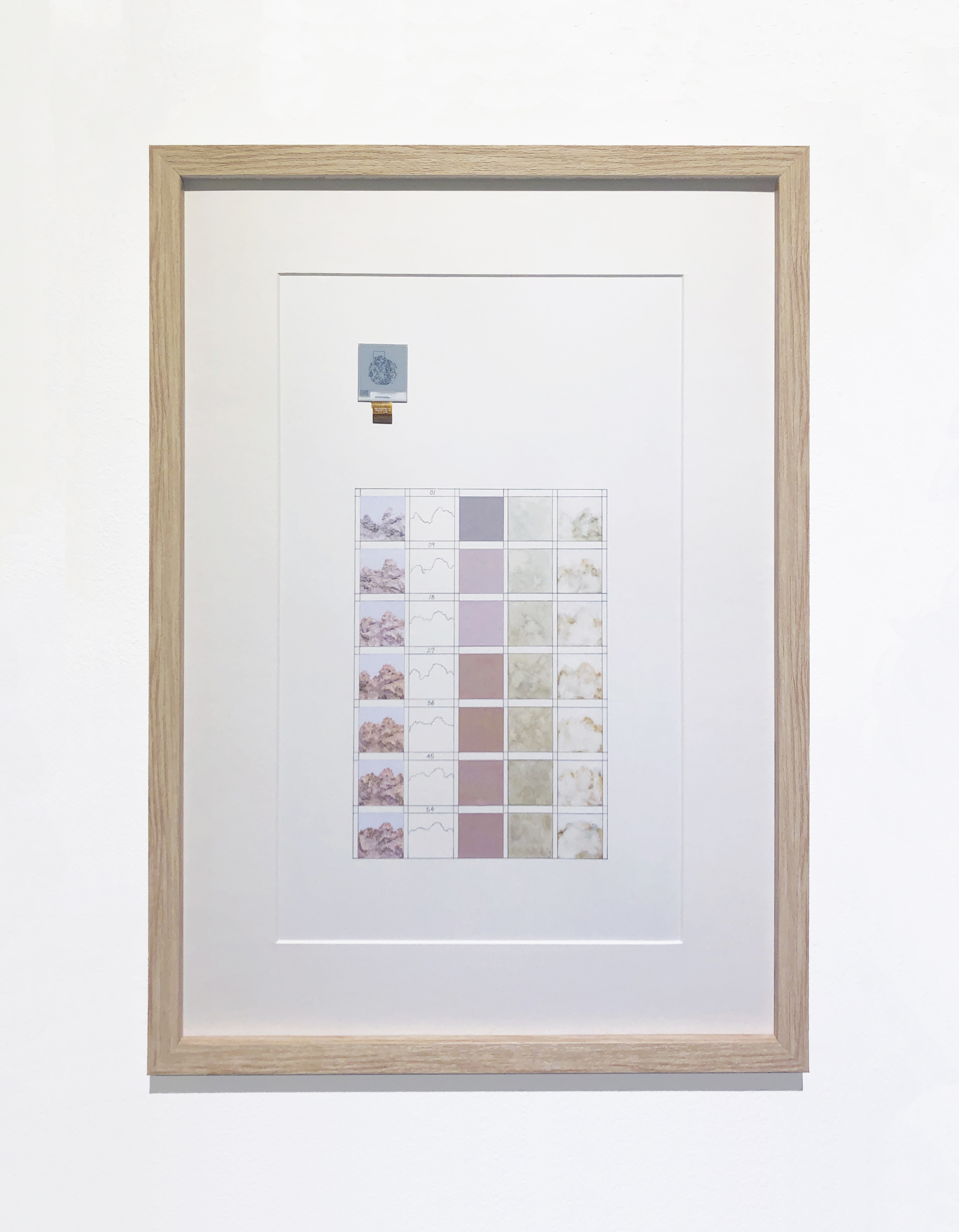
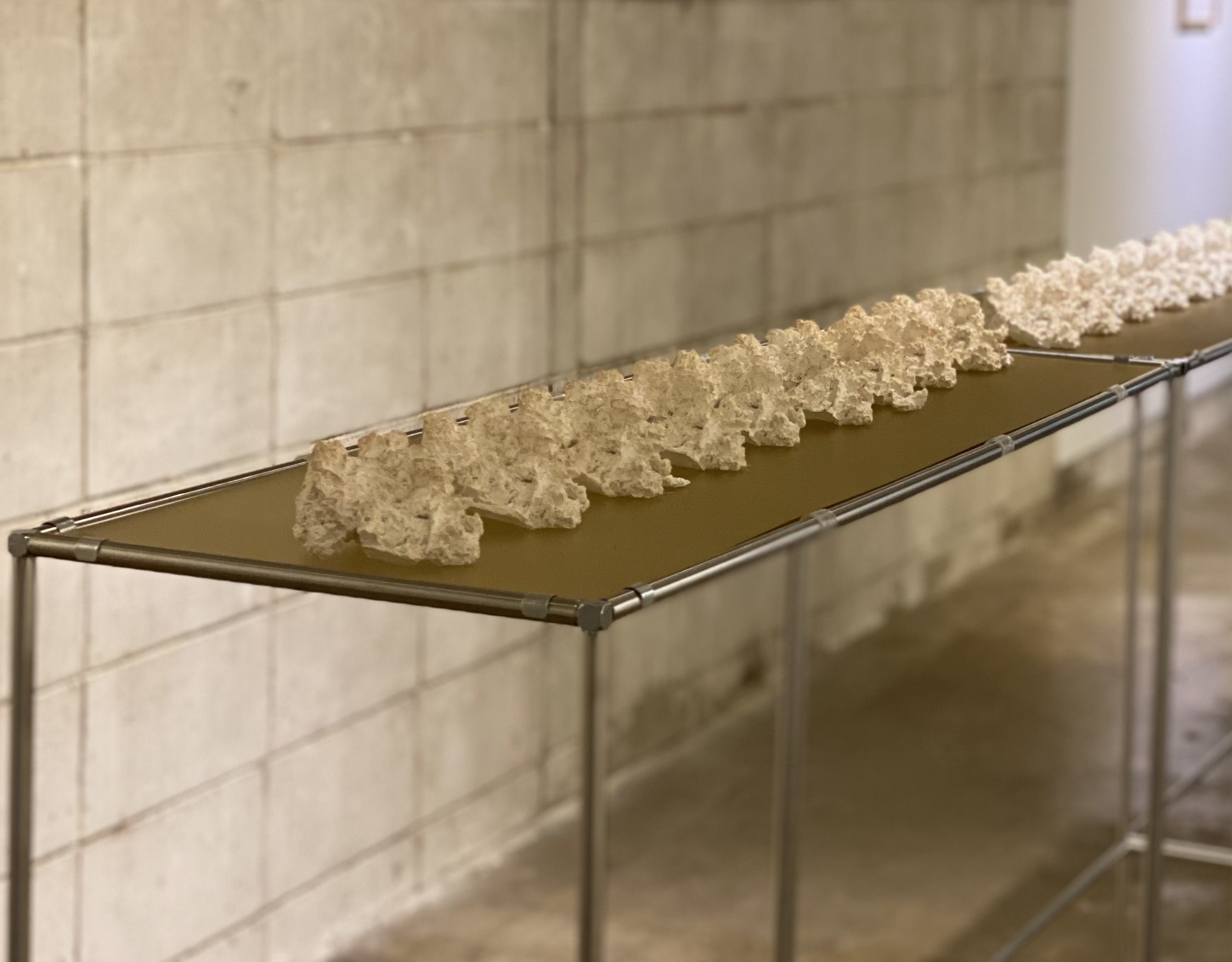
Featured:
CICA | https://cicamuseum.com/ji-yoon-chung-solo-exhibition/
Traces of
Mixed Media on Paper,
Plaster and September 11th, 2020 Providence River


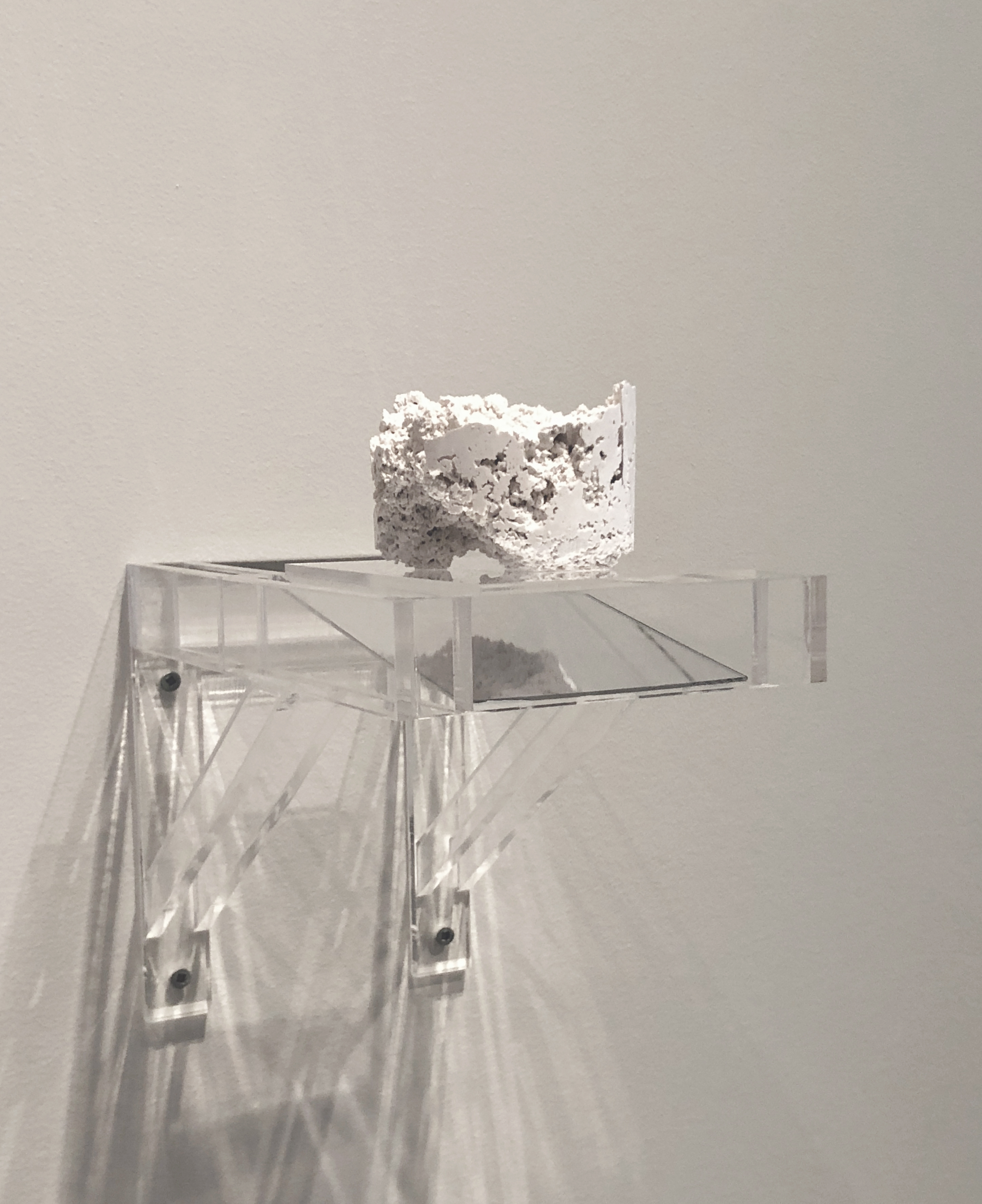

(28,45) (39,45)
(28,20) (39,20)

41.817244, -71.390785

09/11/2020
